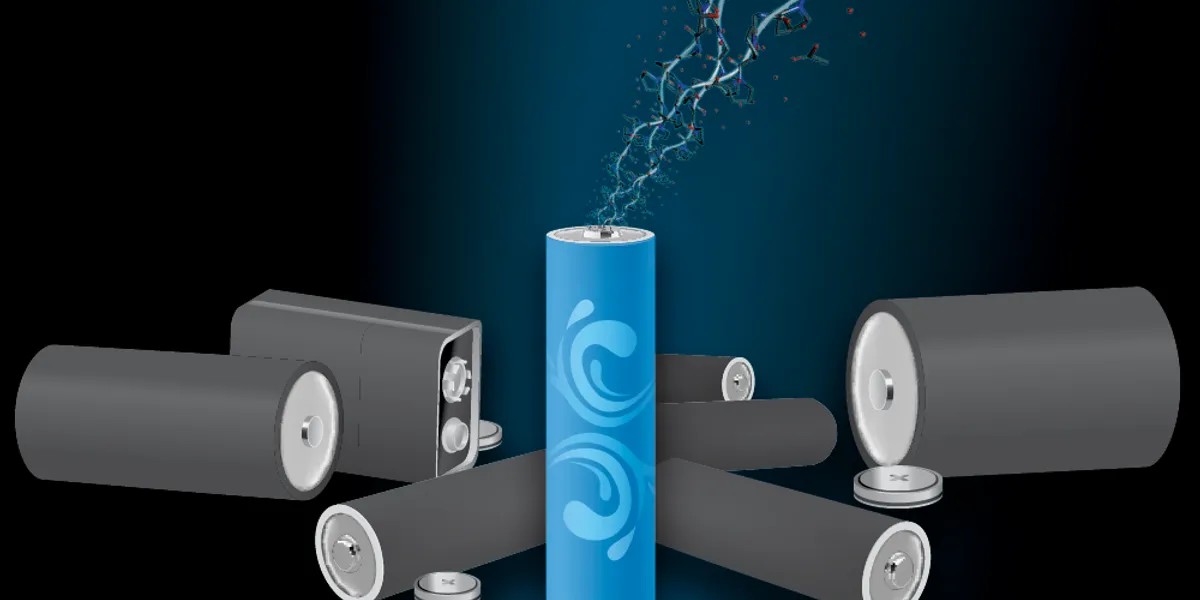
Texas A&M University scientists have been working with metal-free, water-based battery electrodes, and they’re finding that the difference in energy storage capacity is as much as 1,000%.
How the water-based batteries work
In the scientists’ paper, published in Nature Materials this week, the water-based, or aqueous, batteries consist of a cathode – the negatively charged electrode; an anode – the positively charged electrode; and an electrolyte, like traditional batteries. But in this water-based battery, the cathodes and anodes are polymers that can store energy, and the electrolyte is water mixed with organic salts.
The electrolyte transfers the ions – the charge-carrying particles – back and forth between the cathode and the anode, and the electrolyte is also key to energy storage through its interactions with the electrode.
Chemical engineering professor and co-author Dr. Jodie Lutkenhaus asserts:
If an electrode swells too much during cycling, then it can’t conduct electrons very well, and you lose all the performance.
I believe there is a 1,000% difference in energy storage capacity, depending on the electrolyte choice because of swelling effects.
According to their paper, the electrodes – the “redox-active non-conjugated radical polymers” – are promising candidates for water-based batteries because of the polymers’ high discharge voltage and fast redox kinetics.
However, the researchers note in their paper’s abstract:
[L]ittle is known regarding the energy storage mechanism of these polymers in an aqueous environment. The reaction itself is complex and difficult to resolve because of the simultaneous transfer of electrons, ions, and water molecules.
The future of aqueous batteries
The researchers suggest that water-based batteries might be able to mitigate potential shortages of metals such as cobalt and lithium, as well as eliminate the potential for battery fires.
Lutkenhaus continued:
There would be no battery fires anymore because it’s water-based.
In the future, if materials shortages are projected, the price of lithium-ion batteries will go way up. If we have this alternative battery, we can turn to this chemistry, where the supply is much more stable because we can manufacture them here in the United States and materials to make them are here.
The researchers also conducted computational simulation and analysis, and they’ll carry out further simulations to better understand the theory.
Top comment by Jarko
Interesting. But just to be clear. They did NOT build any such battery, and it does NOT promise a 1000% improvement in capacity (as ML seems to imply). This is a fundamental study of a prospective electrode material.
Chemistry assistant professor and co-author Dr. Daniel Tabor said:
With this new energy storage technology, this is a push forward to lithium-free batteries. We have a better molecular level picture of what makes some battery electrodes work better than others, and this gives us strong evidence of where to go forward in materials design.
Read more: A Mars rover scientist is about to scale carbon-oxygen batteries
Photo: Texas A&M Engineering
UnderstandSolar is a free service that links you to top-rated solar installers in your region for personalized solar estimates. Tesla now offers price matching, so it’s important to shop for the best quotes. Click here to learn more and get your quotes. — *ad.
FTC: We use income earning auto affiliate links. More.




Comments